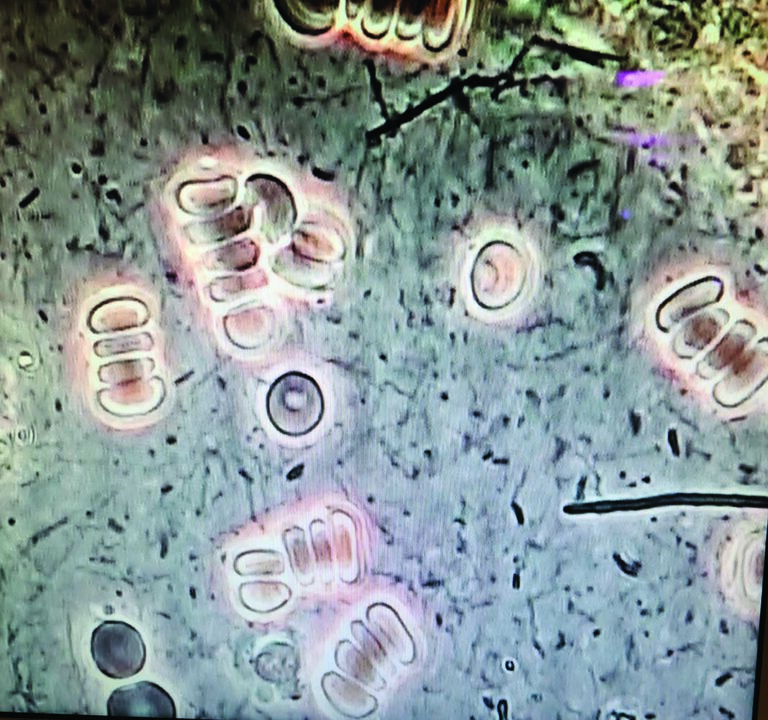
Dental hygiene is about so much more than just “cleaning teeth.” Yet, that seems to be all we focus on in our dental health recare appointments. We can and should do so much more because the health of the mouth is a reflection of the health of the body. It’s time to truly educate our patients by practicing “Preventistry” and addressing the root causes of our patients’ dental diseases. Dental disease is a symptom of a bigger breakdown within the body. By incorporating a biological dental health philosophy, we look for these underlying connections. Understanding and addressing the oral-systemic connections can lead to more comprehensive and effective dental care.
Dental disease affects 90%1 of our patients- either through tooth decay or gum disease. These silent infections not only damage our teeth and gums but the pathogens travel throughout the body, affecting our cardiovascular systems,2,3 joints,4 developing fetuses,5 brain health,6 and even contributing to cancers.7 These are but a few of the many oral-systemic links.
MICROBES ON THE MOVE
We know that what happens in the mouth does not stay in the mouth. We inhale our oral pathogens, swallow them, share them with our partners and kids, and introduce them into our bloodstream and lymph system with every floss, brush, and chew. They can inflame our arteries. Dental bacteria introduced into the bloodstream may trigger a heart attack or stroke – seventy-eight percent of clots contributing to heart attacks and strokes contain oral pathogens from periodontal disease, dental caries, as well as from failing root canals.8
MIND YOUR MICROBES
Bacteria, fungi, parasites, and viruses live within the furrows of the tongue, in the tonsillar crypts, on teeth and gums, and under the gumline. They thrive in the mouth undisturbed. Our patients are completely unaware these pathogens are a lurking time bomb. They may mention their gums “always bleed” and that they have “soft teeth, just like mom or dad”. But, because nothing hurts, they dismiss the blood and the decay. They don’t understand the relevance and critical importance of these signs – it is up to us to educate them.
Patients need to know how healthy or unhealthy their mouth truly is by doing some manner of bacterial pathogenic testing. I monitor every patient’s biofilm by using a chairside phase contrast microscope. Plaque from different areas of the mouth is placed on a slide, then covered, sealed, and magnified on my microscope and seen on a video monitor. It reveals some of what is living under the gumline. A healthy microbiome looks completely different from one of pathology. Seeing the bacteria, fungi, and parasites squirming on the screen makes dental disease real and alive for the patient.
It is my greatest patient motivator and educational tool. Patients request to see their slides to gauge how their homecare is succeeding, they want the feedback the slides provide. New patients are in awe, having never seen this before, and quickly request more homecare knowledge. They want to know what they can do starting right now, they don’t want to wait until their next appointment months from now. They want their children and spouse to be seen by our office as well. Seeing is believing, and highly motivating.
Most offices don’t have a microscope. But every office can do salivary diagnostics on every patient. Salivary diagnostics, while not instant gratification like my microscope slide, provides detailed information on what pathogens are living within the mouth, and pockets. I often use salivary diagnostics in addition to the microscope because the scope does not see viruses or caries pathogens. The presence of viruses makes periodontal pathogens even more virulent,9 and may play a role in dementia.10 Quantifying the levels of pathogens whether for caries or periodontal disease gives us a starting point so we can see patient progress. We cannot treat what we do not measure. The best part of salivary testing is what it reveals. It can signal early warning signs that a problem is brewing way before chronic disease sets in. This tells us what might happen and gives us a direction to head rather than waiting until bone loss or tooth decay has occurred.11
Fig. 1

Fig. 2

DENTAL-MEDICAL COLLABORATION
These salivary diagnostics are medical tests that should be shared with primary care providers. It is up to us to educate the medical community on the oral-systemic connections. They need to see that the mouth is connected to the body and that the introduction of these oral pathogens into the body has far-ranging consequences. We need our primary care providers to help the patient have the building blocks for health. We need them to dive deeper into the root causes of our patient’s dental diseases.
Patients need blood and lab tests to show us if they are absorbing nutrients,12 have gut dysbiosis,13 diabetes,14 gluten intolerance, absorption issues,15 or other systemic complications16 that will make healing the oral cavity impossible. Dental diseases are but a symptom of greater systemic problems with the entire body.
BEING BIO-LOGICAL
In my biological dental hygiene practice my mantra is “test, teach, treat repeat” until the patient is healthy. I don’t just clean teeth, I set the stage for healing to occur. I educate on nutrition, airway, nasal breathing, xerostomia, probiotics, prebiotics, as well as oral hygiene power tools. This is not a one-time appointment but a series of visits. We are doing a deep dive into the causes of dental diseases. This is preventistry.
Biofilm doesn’t just get dysbiotic because the patient forgot to brush or floss, but rather, it is something happening at the mitochondrial level with a lack of oxygen or nutrition. It is because of mouth breathing and pH. It may be a result of a lack of vitamins A, D, K, or C. We need to look beyond the teeth and gums to find these root causes. Removing the calculus or plaque biofilm twice yearly won’t help the patient in the long term.
Of course, I scale, air polish with EMS, and disinfect with ozone and laser therapy and that helps the patient for a short while. The microbiome regrows within 24 hours.17 The long-term goal is to grow a healthy microbiome by changing the pH, feeding the good microbes with the nutrients they need, and giving the body the building blocks for health.18
Biological dental practitioners19 prioritize working in harmony with the body, using products with minimal toxicity to safely achieve modern dentistry’s objectives. Our practices proudly embrace a fluoride-free, and mercury-free environment while adhering to mercury-safe protocols.
Rooted in scientific principles and supported by thorough research, our approach is centered on respecting the body’s terrain and creating conditions conducive to self-healing.
Fig. 3

Fig. 4

HEALERS HEALING
The mouth is the window into the health of the body. To treat the dysbiosis of the mouth we must also address the deep issues that cause dental diseases. Biological practitioners ask themselves why the disease is there and look beyond the teeth and gums for better answers. Our patients need us to partner with them on their healing journeys. We are healers. 
Oral Health welcomes this original article.
References
- Oral Health in America – April 2022 Bulletin. (n.d.). Retrieved from https://www.nidcr.nih.gov/research/oralhealthinamerica/section-3a-summary
- The Oral-Systemic Connection: How Bacteria in Your Mouth Can Harm Your Heart. (2020). Retrieved from. https://baledoneen.com/blog/the-oral-systemic-connection-how-bacteria-in-your-mouth-can-harm-your-heart/
- Larvin, H., Kang, J., Aggarwal, V. R., Pavitt, S., & Wu, J. (2021). Risk of incident cardiovascular disease in people with periodontal disease: A systematic review and meta-analysis. Retrieved from https://www.ncbi.nlm.nih.gov/pmc/articles/PMC7853902/
- Ma, K. S.-K., Lai, J.-N., Thota, E., Yip, H.-T., Chin, N.-C., Wei, J. C.-C., & Van Dyke, T. E. (2022). Bidirectional Relationship Between Osteoarthritis and Periodontitis: A Population-Based Cohort Study Over a 15-year Follow-Up. Retrieved from https://www.ncbi.nlm.nih.gov/pmc/articles/PMC9358960/
- Nannan, M., Xiaoping, L., & Ying, J. (2022). Periodontal disease in pregnancy and adverse pregnancy outcomes: Progress in related mechanisms and management strategies. Retrieved from https://www.ncbi.nlm.nih.gov/pmc/articles/PMC9640773/
- Choi, S., Kim, K., Chang, J., Kim, S. M., Kim, S. J., Cho, H., & Park, S. M. (2019). Journal of the American Geriatrics Society, 67(6), 1234–1239. doi:10.1111/jgs.15828
- Mone, A., & Mehl, V. (2018). More Evidence of Link Between Severe Gum Disease and Cancer Risk Retrieved from: https://www.hopkinsmedicine.org/news/newsroom/news-releases/2018/01/more-evidence-of-link- between-severe-gum-disease-and-cancer-risk
- D. Scott Trettenero, DDS. “Bacteria from Oral Infections and CVD: Understanding the Scientific Connection and Its Impact on Clinical Practice.” Dentistry IQ, 10 Nov. 2022, www.dentistryiq.com/dentistry/oral-systemic-health/article/16367968/bacteria-from-oral-infections-an d-cardiovascular-disease-understanding-the-scientific-connection-and-its-impact-on-clinical-dental-practice. Accessed 06 Jan. 2024.
- 9 (N.d.). Retrieved from https://www.gijhsr.com/GIJHSR_Vol.5_Issue.1_Jan2020/14.pdf#:~:text=In%20mid%201990%E2%80%99s%20herpes%20viruses%20have%20emerged%20as,are%20at%20increased%20risk%20for% 20certain%20bacterial%20infections.
- (N.d.). https://www.cell.com/neuron/fulltext/S0896-6273(22)01147-3?_rerturnURL=https%3A%2F%2Flinking hub.elsevier.com%2Fretrieve%2Fpii%2FS0896627322011473%3Fshowall%3DtruereturnURL=https%3A%2F%2Flinking hub.elsevier.com%2Fretrieve%2Fpii%2FS0896627322011473%3Fshowall%3Dtrue
- OralDNA | Test Menu | MyPerioPath
- Najeeb, S., Zafar, M. S., Khurshid, Z., Zohaib, S., & Almas, K. (2016). The Role of Nutrition in Periodontal Health: An Update. Retrieved from https://www.ncbi.nlm.nih.gov/pmc/articles/PMC5037517/
- Frontiers | Co-pathogens in Periodontitis and Inflammatory Bowel Disease (frontiersin.org)
- Diabetes, Gum Disease, & Other Dental Problems – NIDDK. (n.d.). Retrieved from https://www.niddk.nih.gov/health-information/diabetes/overview/preventing-problems/gum-disease-d ental-problems
- Ehrlich, S. (2022). The link between vitamin deficiency and tooth decay. Retrieved from https://www.shdc.com.au/holistic-dentistry/vitamin-deficiency-and-increased-tooth-decay/
- What Diseases Could Cause My Gums to Bleed? (webmd.com)
- X, S. (2021). New study shows 24-72 hours of poor oral hygiene impacts oral health. Retrieved from: https://medicalxpress.com/news/2021-03-hours-poor-oral-hygiene.html#:~:text=Poor%20oral%20hy giene%20produces%20gum-disease%20bacteria%20and%20accelerates,the%20beneficial%20anti- inflammatory%20chemicals%20they%20are%20associated%20with.
- 7 Steps to Great Oral Health After Dental Hygiene Courses. (2022). Retrieved from https://www.canadianacademyofdentalhygiene.ca/blog/7-building-blocks-to-great-oral-health.html
- Brennan, F. (2023). About the IAOMT: A Scientific, Biological Dental Organization. Retrieved from https://iaomt.org/about-iaomt/
About the Author:

Barbara Tritz is a renowned international guest speaker, accomplished writer, and dedicated biological dental hygienist practicing at Green City Dental in Edmonds, Washington. As the owner of Washington Oral Wellness in Kirkland, WA, Barbara specializes in orofacial myofunctional therapy, offering a holistic approach to dental health and wellness. She is acknowledged as a Patient Impact and Rise Above Honoree for August 2022. To connect with Barbara, you can reach her at contact@queenofdentalhygiene.net









